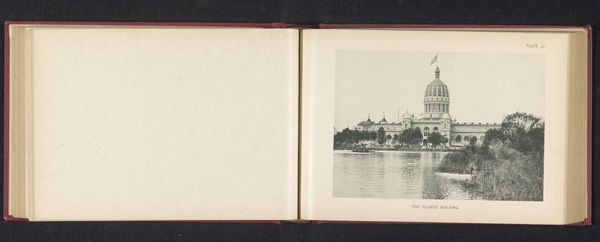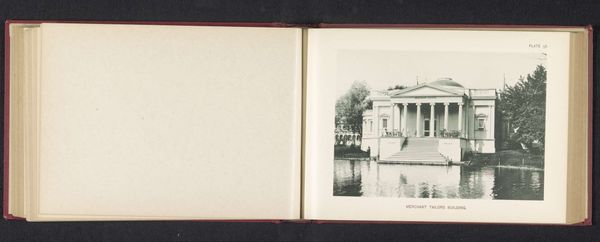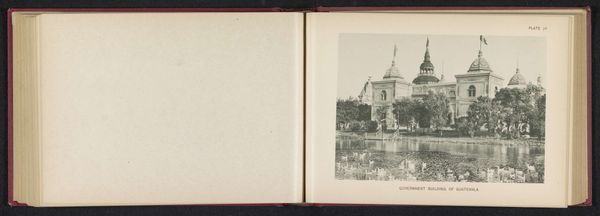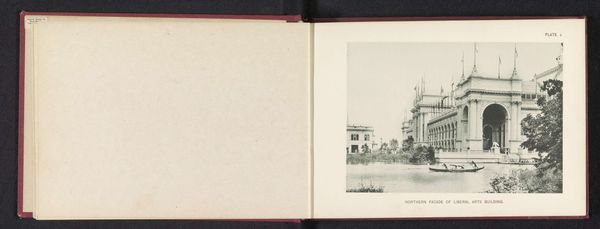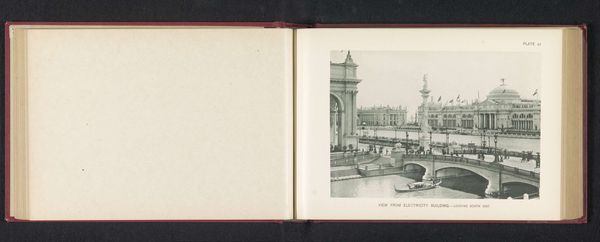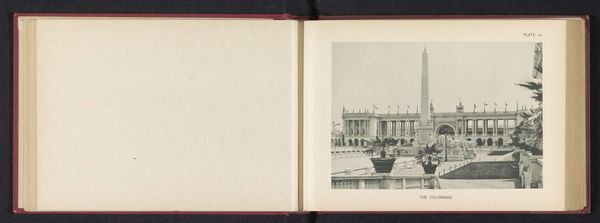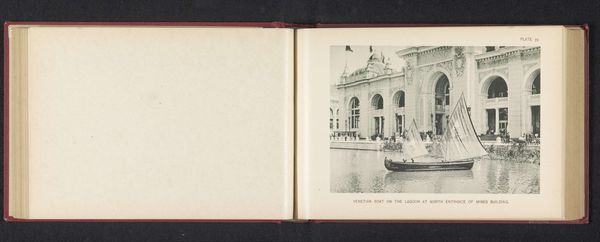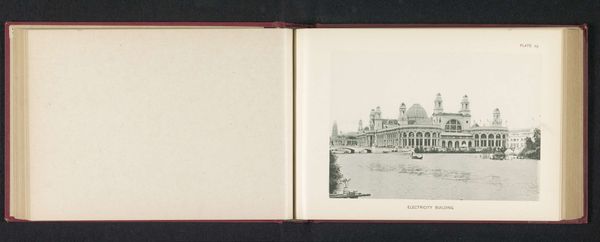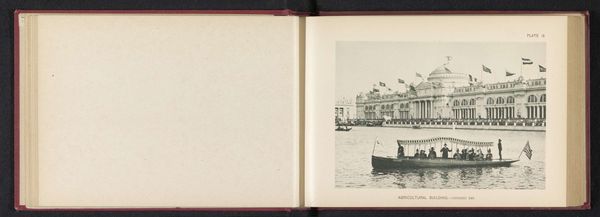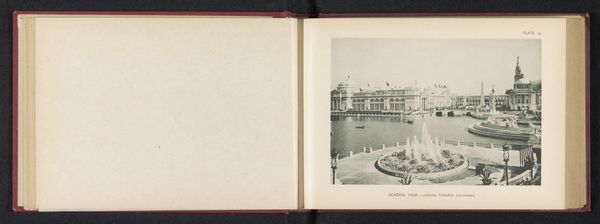
Gebouw van Brazilië op de World's Columbian Exposition in Chicago in 1893 1893
0:00
0:00
Dimensions: height 134 mm, width 190 mm
Copyright: Rijks Museum: Open Domain
Editor: This albumen print captures the Brazilian Pavilion at the 1893 World's Columbian Exposition in Chicago. The building’s reflection shimmers in the water, and it feels quite grand, but also a little dreamlike. What catches your eye in this image? Curator: The building itself. Look at that neo-classical style, that reaching for an idealized past. It’s not just architecture, but a carefully constructed symbol. The exposition was meant to display progress, but within that narrative, each country sought to project an image of itself, a message steeped in its own history and aspirations. Brazil is declaring its place among global powers, using the visual language of established empires. Editor: So, the choice of neo-classicism is deliberate, to convey a sense of established power? Curator: Absolutely. Consider the symbolism embedded in the structure, in the very forms it evokes: of law, of order, of lasting civilization. The photograph itself plays a role too – it documents not just the building, but the ambition behind it. These world expositions were, in a sense, projecting fantasies on a global stage. Editor: I hadn't considered how much intention goes into choosing a specific style, a kind of visual rhetoric. Curator: Indeed. The building isn’t just a pretty façade. It’s a carefully chosen language meant to resonate deeply with ideas of cultural permanence. Each spire and column contributes to this narrative. Even the reflections in the water suggest a mirroring, a stability, and echo of power. Editor: I see what you mean. Looking at it now, the photograph is no longer just a record, it's like a visual declaration. I am going to explore the neo-classical imagery more carefully from now on.
Comments
No comments
Be the first to comment and join the conversation on the ultimate creative platform.
